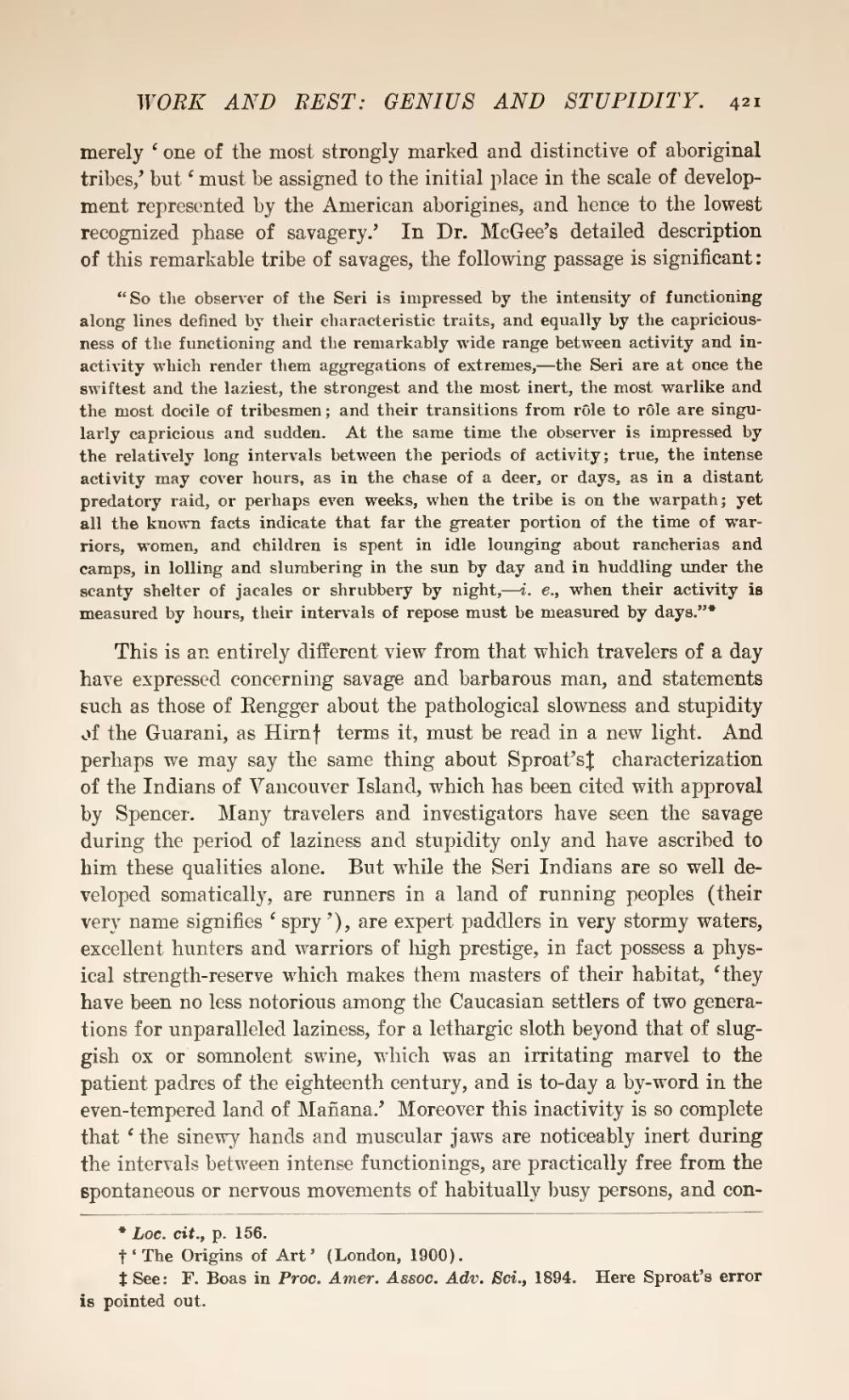merely ‘one of the most strongly marked and distinctive of aboriginal tribes’ but ‘must be assigned to the initial place in the scale of development represented by the American aborigines, and hence to the lowest recognized phase of savagery.’ In Dr. McGee's detailed description of this remarkable tribe of savages, the following passage is significant:
"So the observer of the Seri is impressed by the intensity of functioning along lines defined by their characteristic traits, and equally by the capriciousness of the functioning and the remarkably wide range between activity and inactivity which render them aggregations of extremes,—the Seri are at once the swiftest and the laziest, the strongest and the most inert, the most warlike and the most docile of tribesmen; and their transitions from rôle to rôle are singularly capricious and sudden. At the same time the observer is impressed by the relatively long intervals between the periods of activity; true, the intense activity may cover hours, as in the chase of a deer, or days, as in a distant predatory raid, or perhaps even weeks, when the tribe is on the warpath; yet all the known facts indicate that far the greater portion of the time of warriors, women, and children is spent in idle lounging about rancherias and camps, in lolling and slumbering in the sun by day and in huddling under the scanty shelter of jacales or shrubbery by night,—i. e., when their activity is measured by hours, their intervals of repose must be measured by days.”[1]
This is an entirely different view from that which travelers of a day have expressed concerning savage and barbarous man, and statements such as those of Rengger about the pathological slowness and stupidity of the Guarani, as Hirn[2] terms it, must be read in a new light. And perhaps we may say the same thing about proat's[3] haracterization of the Indians of Vancouver Island, which has been cited with approval by Spencer. Many travelers and investigators have seen the savage during the period of laziness and stupidity only and have ascribed to him these qualities alone. But while the Seri Indians are so well developed somatically, are runners in a land of running peoples (their very name signifies ‘spry’), are expert paddlers in very stormy waters, excellent hunters and warriors of high prestige, in fact possess a physical strength-reserve which makes them masters of their habitat, ‘they have been no less notorious among the Caucasian settlers of two generations for unparalleled laziness, for a lethargic sloth beyond that of sluggish ox or somnolent swine, which was an irritating marvel to the patient padres of the eighteenth century, and is to-day a by-word in the even-tempered land of Mañana.’ Moreover this inactivity is so complete that ‘the sinewy hands and muscular jaws are noticeably inert during the intervals between intense functionings, are practically free from the spontaneous or nervous movements of habitually busy persons, and con-
